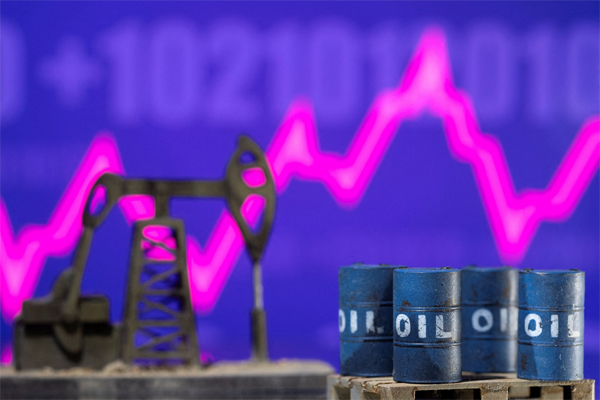
Myra P. Saefong and William Watts, MarketWatch
SAN FRANCISCO
EnergiesNet.com 04 04 2022
Oil futures settled higher on Monday, with U.S. prices back above the $100 mark after posting the biggest weekly drop in two years, as European leaders called for additional sanctions against Moscow following images over the weekend showing evidence of Russian atrocities in Ukraine.
Price action
- West Texas Intermediate crude for May delivery CL.1, 0.72% CL00, 0.75% CLK22, 0.74% rose $4.01, or 4%, to settle at $103.28 a barrel on the New York Mercantile Exchange after settling Friday at $99.27, the lowest since March 16.
- June Brent crude BRN00, 0.76% BRNM22, 0.76%, the global benchmark, rose $3.14, or 3%, at $107.53 a barrel on ICE Futures Europe. WTI, the U.S. benchmark, fell 12.8% last week, while Brent dropped 11.1%, the biggest weekly percentage declines for both since late April 2020.
- May gasoline RBK22, 0.89% tacked on 1.4% to $3.198 a gallon
- May heating oil HOK22, 0.72% added 3.6% to $3.546 a gallon.
- May natural gas NGK22, 2.28% settled at $5.712 per million British thermal units, down 0.1%.
Market drivers
The weekend saw grim headlines and images emerge out of Ukraine as Russian forces pulled back from positions near Ukraine’s capital, Kyiv. So far, the bodies of 410 civilians have been found in towns near the capital that were recently retaken from Russian forces, said Ukraine’s prosecutor-general, Iryna Venediktova.
“As long as the geopolitical uncertainty linked to the Russia-Ukraine war persists, global oil markets will maintain a fear-bid,” Tyler Richey, co-editor at Sevens Report Research, told MarketWatch.
Images of bodies, many showing signs of torture, in the city of Bucha prompted several European leaders to call for tougher sanctions against Moscow.
“The EU (European Union) is still unlikely to ban Russian oil and gas imports because it would not be possible to find an alternative supply of the latter in particular at short notice, meaning such a step would have serious economic consequences,” said Carsten Fritsch, commodity analyst at Commerzbank, in a note.
“Nonetheless, this topic is likely to move further into focus again after having seemingly taken more of a back seat of late, while the uncertainty surrounding the payment modalities for purchases of Russian gas has also abated,” he said.
The oil market was volatile last week, slumping as the U.S. announced the release of 1 million barrels a day of crude for the next six months from its Strategic Petroleum Reserve, while the International Energy Agency on Friday said they would release additional barrels.
Read: What Biden’s historic decision to release oil reserves means for the market
In other news, Saudi Aramco announced Monday that it raised its May oil prices for customers in all regions, with prices for the four types of oil it sells to the U.S. up by $2.20 a barrel from April. That also helped to bolster oil prices Monday, said Sevens Report Research’s Richey.
Still, “there are some technical cracks emerging in the uptrend,” suggesting that WTI is potentially poised for a corrective pullback into the low to mid $90’s, Richey said. “That would very likely occur on any positive developments in ceasefire negotiations between Russia and Ukraine.”
Meanwhile, rising COVID-19 cases in China has raised expectations for a decline in energy demand. The country last month locked down Shanghai, its largest city and financial capital, as part of its zero-COVID policy.
Investors were also weighing the announcement late Friday of a two-month truce in Yemen between a Saudi-affiliated coalition and Iran-backed Houthi rebels. Crude-oil volatility had been amplified in recent weeks amid Houthi drone attacks on Saudi oil facilities.
marketwatch.com 04 04 2022












